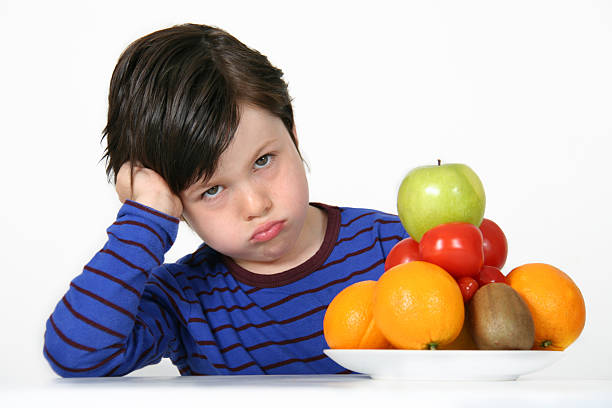Nourishing growing minds: What should be on your child’s platter?
Making a healthy, balanced lunch for your child is one of the most difficult tasks parents have to face. Packing a healthy snack is a challenge, but it becomes even more difficult when you are trying to avoid junk food. Knowing the nutritional value of foods can help in such situations. Experts say that it is important to instill healthy eating habits in children so they don’t eat junk food and improve their health.
Healthy food for children
In a speech about child nutrition, given at the Edge of Nutrition Summit organized by Happyest Health, Dr. Supraja, Director of Pediatric Services, Senior Pediatrician, and Intensivist at Dhee Hospitals, Bengaluru, said: “It’s important for parents to know what is considered good food and junk.” All foods that contain protein, fiber, vitamins, and minerals are good for kids. Foods that contain excessive amounts of salt, sugar, fats, and preservatives are junk. Parents can choose the right food if they are familiar with its nutritional value.
Colour code for nutrition
Dr Chandrasekar said that children are often deficient in iron, Vitamin D, vitamin B12, Zinc, and Calcium. This leads to a poor immune system and leaves them vulnerable to Allergies, constipation, and early puberty.
She explained that children should avoid white foods such as salt, sugar, and maida while choosing dark foods, like meats, legumes, and nuts, for their health.
According to Dr Chandrasekar, parents are also concerned about the eating and play habits of their children. “The eating environment plays a crucial role in developing healthy eating habits. Routine and structure are vital to their health. She added that children should spend time with their family and in nature as excessive screen time can cause them to adopt a lazy lifestyle and make poor choices when it comes to food, leading to obesity.
The perfect platter for children
Dr. Chandrasekar stressed the importance of providing children with the right food in the correct proportions so that they receive the nutrition required. A balanced diet, according to Dr Chandrasekar, should include:
- A quarter-plate of whole grains, millets, and millet.
- Quarter plate of protein such as dhals (lentils), beans, soya (soya beans), nuts, seeds, fish, poultry, eggs, and meat. It would be best if you chose lean protein.
- All five vegetables — green, starchy red-orange beans, and other types of vegetables — should be included in a quarter plate. To ensure that children receive all of the micronutrients, these vegetables should be rotated on a regular basis.
- A quarter plate of fruit. Choose whole fruits, smoothies, or even whole fruits over juices.
- One cup of any milk product. For optimal health, it is best to eat homemade and fresh items.
She explained that any dish (whether Indian or Western) could be transformed into a healthy one if it contained all the necessary nutrients. She said that a homemade pizza made with whole grain and without preservatives was a better choice than poori or also, which are lower in nutritional value.
Children’s nutritional needs
According to Dr Rebecca K Raj of St John’s Research Institute in Bengaluru, a child’s diet should be varied and include all colors of fruits and veggies. Children must consume rainbow-colored vegetables and fruits to obtain all micronutrients. She added that children should consume adequate amounts of fat and protein while avoiding an excessive intake of carbohydrates.
Dr Raj stressed that children should eat two to three fruits per day. “A child should consume half a kilogram of fruits and vegetables every day, just like an adult. She said that it can be finished throughout the day and not just at breakfast.
According to Dr Priyanka Routgi, Chief Dietician at Apollo Hospitals in Bengaluru, following the ‘53210″ principle will ensure adequate nutrition and a healthy lifestyle. According to this concept, a child’s daily routine should include:
- Five servings of fruit and vegetables.
- Three balanced meals
- Two hours of screen time is allowed.
- One hour of physical activity.
- Foods high in salt, sugar, and fat (HFSS) and junk food are to be avoided.
Healthy eating habits for children
Rohatgi says it’s crucial to keep up with the rapid growth and hunger pangs that children experience. We as parents must be role models, and we should practice what is preached. We must ensure that our children eat healthy, tasty, and satisfying food. She adds that parents should not reward their children with food and make sure they eat on time.
In his remarks on eating in restaurants, Dr Rohatgi stresses the importance of portion control and a healthy lifestyle. He warns that frequent eating out can lead to obesity among children.
Takeaway
- To ensure that their children receive the proper nutrition, parents need to be aware of the nutritional value of the food they are consuming.
- Increased screen time can lead to poor eating habits and obesity in children.
- Half a kilogram of fruits and vegetables can be consumed by a child every day.
- Rainbow-colored fruits, vegetables, and grains are essential for children to receive all of the micronutrients they need.
